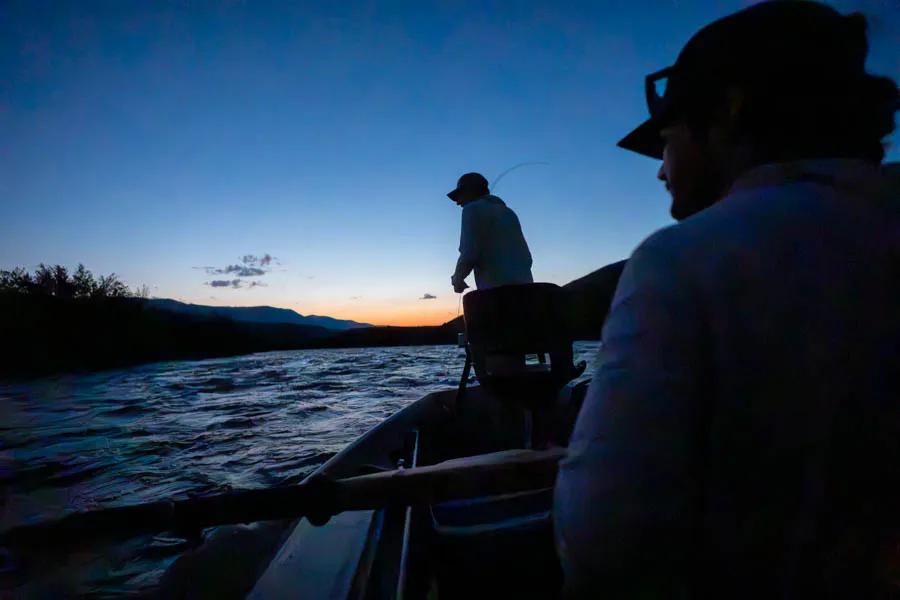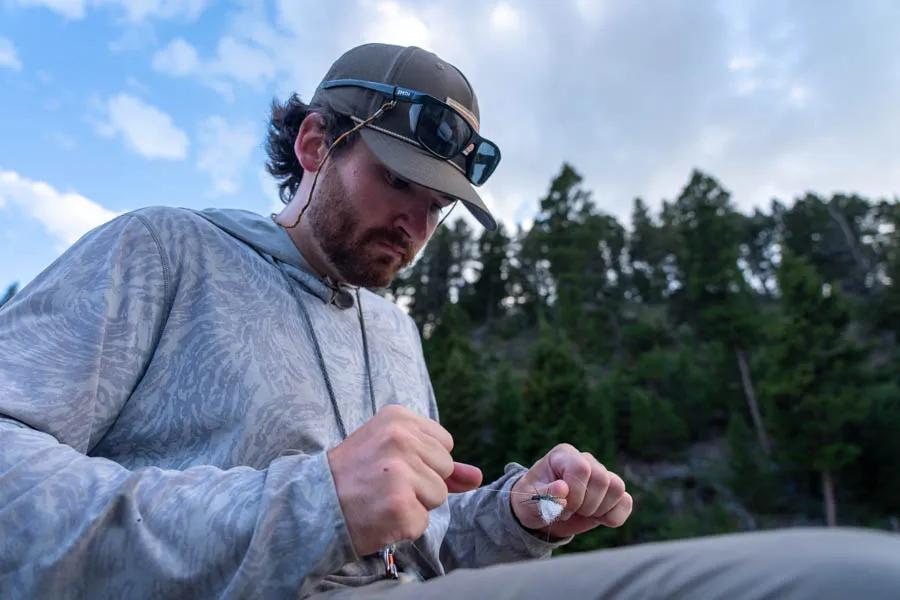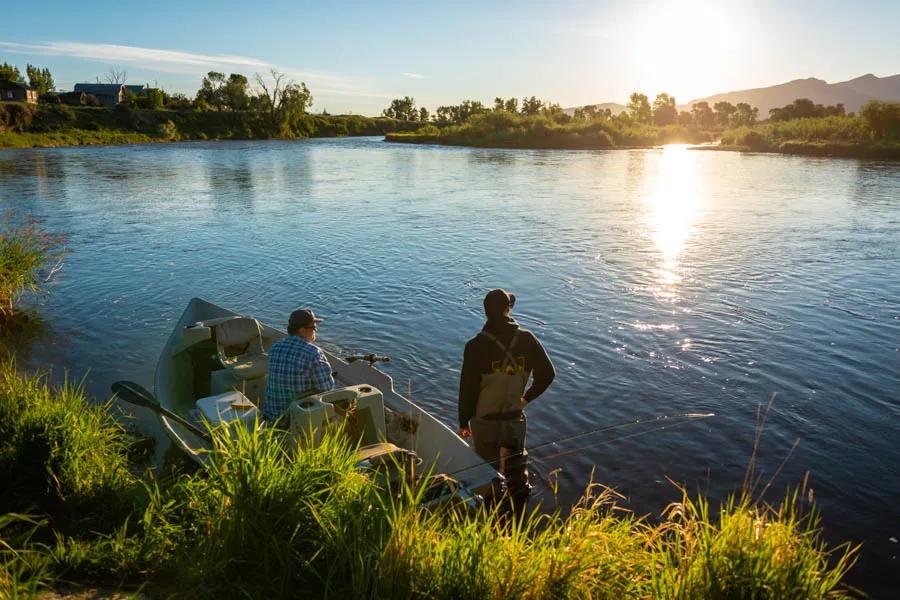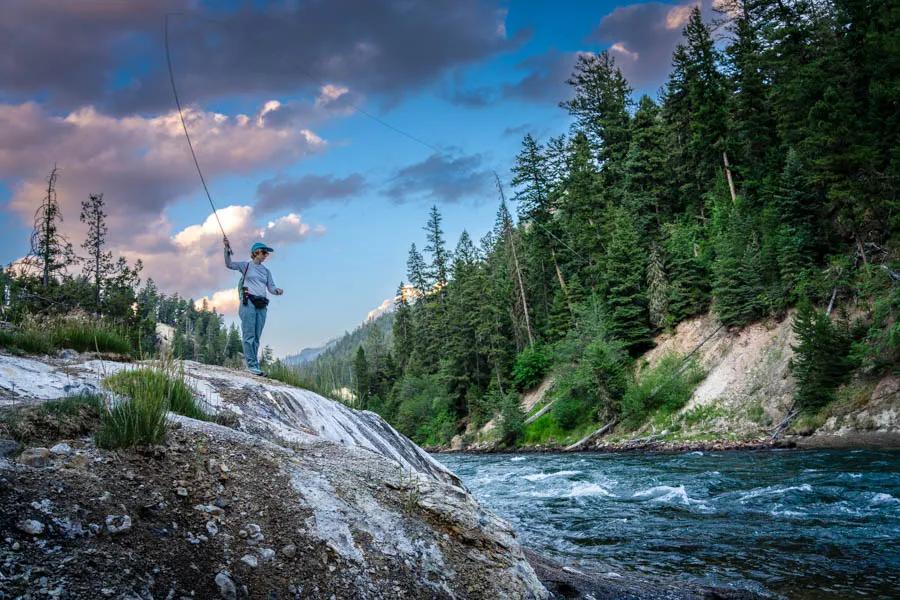
One of the lesser known insect hatches in southwest Montana is the nocturnal stonefly. As the name infers, these insects are creatures of the night. Many anglers will never see this species of stonefly, that is unless they are on the water at daybreak or fish past the hours of sunset. You may have over heard fellow anglers at the fly shop or the boat ramp discussing the midnight stone or Mr. Midnight and wondered what the heck they are talking about…Now you know – it is the nocturnal stone. And it provides some great opportunities for success when fly fishing in Montana.

Timing the Nocturnal Stonefly Hatch
Nocturnal stoneflies can begin hatching in mid-July and run into September. Like other stoneflies, their emergence is determined by the temperature of the water. So, if the flows are low, and the rivers see early heat waves, you can expect to see Mr. Midnight a week or so earlier. Conversely, if the rivers are flowing high and cool, the hatch will push back a few days. It is a reasonably safe bet there will be fish looking for these tasty morsels in August. A typical hatch can last a few months for there is often a best month for fly fishing in Montana.
Since this species of stonefly hatches at night, a majority of anglers miss the opportunity to capitalize on using large dry flies to seduce hungry trout. Like all stoneflies, the nocturnal stones emerge from the water, during the low light hours of dusk, night, and dawn. They crawl from the river bottom onto dry rocks and brush along the edge of the river, where their exoskeleton dries, then molts, as they emerge into the adult stage of their lifecycle. When you are on the river in late July through August, be sure to look at the river’s edge. If you see empty stonefly "shucks" glued to the dry rocks, but don’t see any adults moving about, it’s a good time to fish a nocturnal stonefly nymph pattern to imitate the nocturnal stonefly.
The male nocturnal stones are unable to fly. They are considered a flightless stone, like a male Skwala stone. These flightless stones rely on their legs to motor about. They are quick moving and you might get lucky and catch a glimpse as they scurry to safety. When they are on the surface of the water, they will skitter across the top of the river creating a small wake and attract hungry trout. When trout are keyed into the nocturnal stone, adding a little movement by dragging the fly can produce strikes.

The Best Nocturnal Stonefly Patterns
If you’ve never heard of a Chubby Chernobyl, you probably aren’t spending enough time on the water. "Chubbies" have become one of the top flies used across the West. It is the ideal pattern for just about any stonefly hatch and can be used to imitate a grasshopper too. Because of the versatility, a Chubby can be found permanently rigged on the rods of many Montana anglers in late summer. Chubbies come in many sizes and colors. The most popular color for the nocturnal stone is purple, but darker colored versions like royal, black, and dark brown will produce fish too. Chubbies aren’t the only fly that will work. Just about any stonefly imitation will work, but be prepared to bust out a black or brown Sharpie to subdue the bright colors of a golden stonefly pattern or salmonfly pattern. The most important ingredients for a successful nocturnal stonefly pattern are foam, rubber legs, and elk hair. The foam is a must to keep the fly floating. Rubber legs give the illusion of motion on the surface of the water, similar to the motion a natural bug makes. The elk hair--deer hair can be substituted if necessary--adds volume to the pattern, helping it float and skitter across the water.
Be sure not to forget stonefly nymphs too. Trout like to target these clumsy swimming and crawling stoneflies as they move from the river bottom to the river edge to hatch. Fishing a standard rubber legged stone, like a Pat’s stone or a Jimmy Legs, under a strike indicator can be deadly. Especially when fished shallow, along the river’s edge during the last few hours of daylight. A large Prince Nymph or Pheasant Tail will also fool hungry trout.

How to Fish the Nocturnal Stone
The best time to target trout using nocturnal stoneflies is during the low light hours, just before the sun rises or after it sets. If the sun is on the water, the likelihood of fooling a big trout is reduced. Since the nymphs migrate from the river bottom to the river’s edge, it is important to target the prime feeding zones along the river banks, cause that’s where the hungriest fish will be.
A tight cast to the bank with a Chubby Chernobyl, followed by an immediate mend or twitch, to move the fly just a little, will produce quick strikes. Remember, these flies can’t fly and when they move on the water's surface, they move fast. A natural stone will create a small wake or ripples on the surface. This motion is what the fish are looking for. So, a quick twitch might bring a fish to your fly. If the first movement doesn’t entice a strike, be sure to continue to move the fly as it drifts. Be careful not to get too carried away with your twitching. A subtle movement is all that is needed. As the fly drifts downstream and the line tightens into a swing, let the fly swing and skate across the top of the water back to you. The skating motion on the surface will often trigger a strike. A good way to fish this technique is to think – drag, drift, drag, drift, drag, drift, and so on.
When fishing stonefly nymphs, be sure to focus on the banks. A bank with an abrupt edge, medium paced flow, and a few feet in depth is the ideal location. Cast the fly or flies if fishing a tandem rig as close to the bank as possible. Mend the fly just like you would with a dry fly away from the bank, with a big mend, then begin the drift. During the drift, mending the fly more than a typical dead drift will give the nymphs just the right amount of movement. Another fun way to fish a nymph is on the swing. Again, cast the fly near the bank, quartering slightly downstream. Mend the line upstream to slow the fly, then be prepared for a strike. When a fish strikes, don't set the hook! If you set the hook the same way you would on a dead drift, one of two outcomes will happen: either the fish will miss the hook or the line will break. The best technique is to give the rod a slow raise of the rod tip.

When it comes to fishing stoneflies, most anglers think of big bushy dry flies floating along the surface and a large trout gulping in the dry fly. That can, and does happen, with nocturnal stoneflies. But, what often doesn't happen during a strong emergence of nocturnal stoneflies is actually seeing the adult insects. Some local knowledge and some faith all go a long way in having success for fishing during the nocturnal stonefly hatch on a Montana river or creek.
